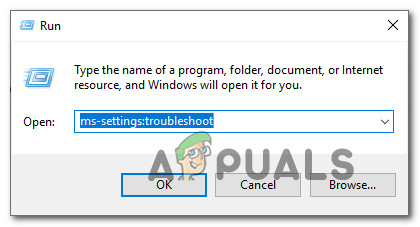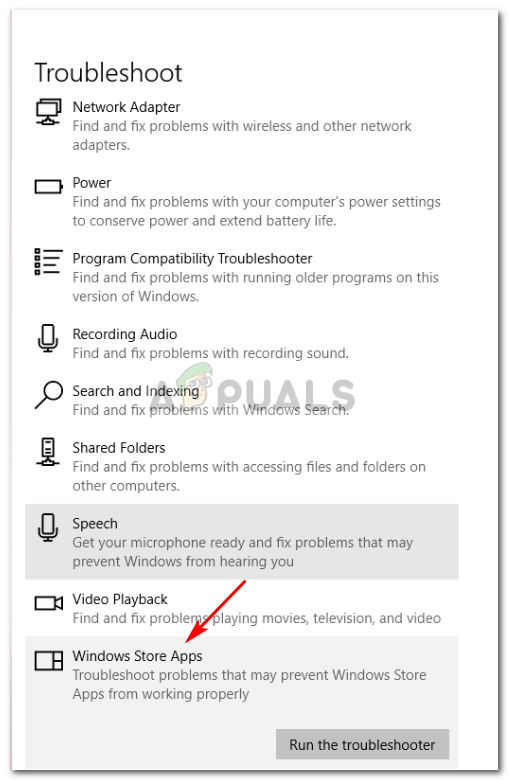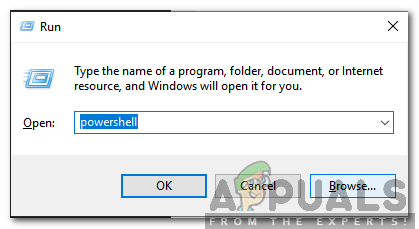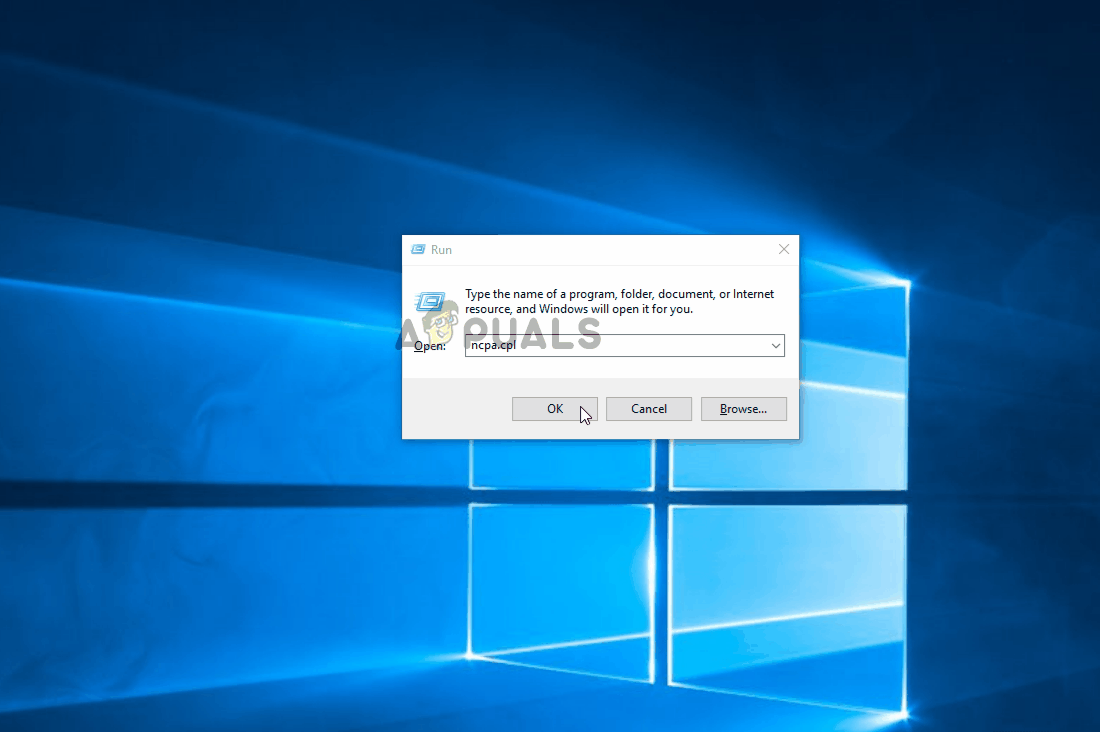How to Fix ‘Error Code: 0x80D02017’ on Windows Store
Several Windows 10 users are encountering the 0x80d02017 error code when trying to install an app via Windows Store. Most affected users are reporting that they are encountering the issue with both games and applications. While some users say that the issue is only occurring with new titles that haven’t been installed before, other users report that the issue is manifesting with games or applications that used to work. In most cases, affected users are suspecting that the issue started occurring after they installed a Windows update.

What is causing the 0x80d02017 Error Code inside the Windows Store?
We investigated this particular issue by looking at various user reports and the repair strategies that are commonly being used to fix this issue on Windows 10 computers. As it turns out, there are several different potential culprits that can be responsible for the manifestation of this error code:
- Common Windows Store Glitch – As it turns out, there is one fairly common Windows store glitch that might cause this particular error code with certain built-in applications when they’re in the process of being updated. If this scenario is applicable, you should be able to resolve the issue promptly by running the built-in Windows Apps troubleshooter.
- Bad Windows update – Another possibility is that a Windows Store glitch was introduced when a bad Windows update was installed. This is fairly common on Windows 10 computers that haven’t been yet updated with the Creator’s Update. In this case, you should be able to resolve the issue by using an elevated Powershell window to reset the Windows Store app.
- 3rd party firewall interference – If you’re using a VPN / proxy client or a 3rd party firewall, chances are it’s ending up inhibiting Windows Store’s ability to download and launch new applications. If this scenario is applicable, likely, the connection is not trusted by the Windows installation agent. In this case, the problem can be resolved by uninstalling the 3rd party client that is causing the conflict.
- IPV6 is conflicting with the dynamic IP – Windows 10 has some issue handling maintaining multiple IPV6 connections whenever it’s using a dynamic IP configuration. If this scenario applies to your particular case, you can avoid the issues altogether by disabling IPV6 support from the Network connection window.
- Corrupted software distribution folder – Another possible culprit that might be responsible for this error code is some type of corruption inside the software distribution folder. If this scenario is applicable, you should be able to resolve the issue by using an elevated Command Prompt to reset the software distribution folder.
If you’re currently struggling to resolve the very same error message when trying to access an application using the Windows Store, this article will provide you with several different troubleshooting steps that should mitigate the issue. Down below, you’ll find several different potential fixes that other users in a similar situation have successfully used to resolve the 0x80d02017 error code.
If you want to remain as efficient as possible, we advise you to follow the methods in the order that they are presented since we ordered by efficiency and severity. Regardless of the culprit that is responsible for the issue, you should eventually stumble upon a method that will help you get around the issue and use the application normally.
Let’s begin!
Run the Windows Apps Troubleshooter
Before you try any other time-consuming fixes, let’s see if your Windows version is not perfectly capable of resolving the issue automatically. All recent Windows versions are equipped with new and improved versions of the classic troubleshooter that will automatically scan various Windows components for inconsistencies and automatically apply the appropriate repair strategy.
If the culprit behind the 0x80d02017 error code is covered by one of the repair strategies included for the troubleshooter, you will be able to resolve the issue automatically simply by running the Windows Apps troubleshooter.
Here’s a quick guide on running the Windows apps troubleshooter to resolve the 0x80d02017 error code:
- Press Windows key + R to open up a run dialog box. Then, type “control.exe /name Microsoft.Troubleshooting” and press Enter to open up the Troubleshooting tab of the Settings tab.

Accessing the Activation troubleshooter Note: On Windows 10, you can also use the ms-settings:troubleshoot command instead.
- Once you get there, go to the Find and Fix other problems, then click on Windows Store apps and select Run the troubleshooter.

Run Windows Store Apps troubleshooter - Once you launch the troubleshooting utility, wait until the initial scan is complete, then follow the on-screen prompts to apply the repair strategy that is recommended based on the type of problem that got discovered.

Apply this fix - Once the fix has been applied, restart your computer and see if the issue has been resolved once the next startup sequence is complete.
If the same 0x80d02017 error code is still occurring, move down to the next method below.
Use Powershell to reset the Windows Store app
If your particular issue is being caused by some type of corruption among the Windows store’s files, you should be able to resolve the issue quite effectively by running a Powershell command capable of resetting the entire Windows Store package.
This might make you lose some user preferences, but it’s one of the quickest and most effective fixes that you can implement using a Powershell terminal. Several affected users have reported that the issue was no longer occurring after following the steps below and restarting their computers.
Here’s a quick guide with how to reset the Windows Store app using a Powershell prompt:
- Press Windows key + R to open up a Run dialog box. Then, type ‘powershell’ and press Ctrl + Shift + Enter to open up an elevated Powershell prompt. When you’re prompted by the UAC (User Account Control), click Yes to grant administrative privileges to the Powershell window.

Typing in “Powershell” and pressing “Shift” + “Alt” + “Enter” - Once you’re inside the administrative Powershell prompt, type or paste the following command to reset the Windows Store app:
Get-AppXPackage *WindowsStore* -AllUsers | Foreach {Add-AppxPackage -DisableDevelopmentMode -Register "$($_.InstallLocation)\AppXManifest.xml"} - Once the process is complete, restart your computer and see if the issue is resolved at the next system startup.
If the same issue is still occurring when you try to download or launch an app via Windows Store, move down to the next method below.
Uninstall 3rd Party Firewall or VPN
As it turns out, VPN or 3rd party firewall clients have the potential of inhibiting Windows Store’s ability to download and launch new applications. This happens because your private connection is not trusted by the Windows installation agent, so the process is being stopped by a security function.
If this scenario applies to your current situation, you will be able to resolve the issue by uninstalling whatever proxy server, 3rd party Firewall, or VPN client that you’re using. This will make the installation agent trust your connections and should allow the application to open without any problem.
Here’s a quick guide on uninstalling the 3rd party firewall or VPN:
- Press Windows key + R to open up a Run dialog box. Then, type “appwiz.cpl” and press Enter to open up the Programs and Features window.

Type appwiz.cpl and Press Enter to Open Installed Programs List - Once you’re inside the Programs and Features screen, scroll down through the list of installed applications and locate your 3rd party firewall or VPN client. Once you see it, right-click on it and choose Uninstall from the newly appeared context menu.

Uninstalling the VPN tool - Follow the on-screen prompts from the next screen to complete the uninstallation of the VPN / Firewall tool. Once the software is uninstalled, restart your computer and see if the issue is resolved at the next system startup.
If the same 0x80d02017 error code is still occurring or this method wasn’t applicable, move down to the next method below.
Disable IPV6 support
This method has the potential of creating additional incompatibilities with your computer (with other applications that make use of IPV6), but it’s still one of the most efficient ways of resolving the 0x80d02017 error.
Although there’s no official explanation on why disabling IPV6 support ended up resolving the issue for a lot of users, users are speculating that it’s probably because Windows Store has the potential of glitching when a dynamic IP configuration is being used.
This procedure might reduce the download & upload speed for a bit, but the workload should be passed over to the IPV4 protocol. Here’s a quick guide on disabling IPV6 support:
- Press Windows key + R to open up a Run dialog box. Then, type “ncpa.cpl” inside the text box and press Enter to open up the Network connections tab.
- Once you’re inside the Network connections tab, right-click on the network connection that is currently active and choose Properties from the newly appeared context menu.
- When you’re inside the Properties screen of the network that you’re connected to, make sure that the Networking tab is selected.
- Next, scroll down through the list of connections items and locate Internet Protocol Version 6 (TCP / IPV6). Once you see it, uncheck the box associated with it, then click Ok to save the changes.
- Once IPV6 is disabled, restart our computer and repeat the action that was previously triggering the 0x80d02017 error code once the next startup sequence is complete.

If the same issue is still occurring or you’re looking for a method that doesn’t involve disabling an Internet Protocol, move down to the next method below.
Reset the software distribution folder
As it turns out, this particular issue can also occur if you’re dealing with a corrupted software distribution folder. Several users in a similar situation have reported that the issue was resolved after they ended up resetting the software distribution folder.
But keep in mind that before you follow the steps below, you need to ensure that you disconnect your computer from the internet – turn off your Wi-Fi or physically disconnect the wired connection. If you fail to do this, Windows 10 will signal that some files can’t be modified and the command will not be successful.
Once you’ve ensured that the internet connection is disabled, follow the instructions below to reset the software distribution folder:
- Press Windows key + R to open up a Run dialog box. Then, type “cmd” and press Ctrl + Shift + Enter to open up an elevated Command Prompt. When you’re prompted by the UAC (User Account Control), click Yes to grant administrative privileges.

Running Command Prompt as an administrator - Once you’re inside the elevated Command Prompt, type the following commands in order and press Enter after each one:
net stop cryptSvc net stop bits net stop msiserver ren C:\Windows\SoftwareDistribution SoftwareDistribution.old rmdir C:\Windows\SoftwareDistribution\DataStore rmdir C:\Windows\SoftwareDistribution\Download net start cryptSvc net start bits net start msiserver
- Once each command has been processed successfully, close the elevated Command Prompt and see if the issue has been resolved by repeating the action that was previously triggering the 0x80d02017 error.




